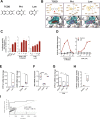The Henna pigment Lawsone activates the Aryl Hydrocarbon Receptor and impacts skin homeostasis
- PMID: 31350436
- PMCID: PMC6659674
- DOI: 10.1038/s41598-019-47350-x
The Henna pigment Lawsone activates the Aryl Hydrocarbon Receptor and impacts skin homeostasis
Erratum in
-
Author Correction: The Henna pigment Lawsone activates the Aryl Hydrocarbon Receptor and impacts skin homeostasis.Sci Rep. 2020 May 20;10(1):8640. doi: 10.1038/s41598-020-65510-2. Sci Rep. 2020. PMID: 32433586 Free PMC article.
Abstract
As a first host barrier, the skin is constantly exposed to environmental insults that perturb its integrity. Tight regulation of skin homeostasis is largely controlled by the aryl hydrocarbon receptor (AhR). Here, we demonstrate that Henna and its major pigment, the naphthoquinone Lawsone activate AhR, both in vitro and in vivo. In human keratinocytes and epidermis equivalents, Lawsone exposure enhances the production of late epidermal proteins, impacts keratinocyte differentiation and proliferation, and regulates skin inflammation. To determine the potential use of Lawsone for therapeutic application, we harnessed human, murine and zebrafish models. In skin regeneration models, Lawsone interferes with physiological tissue regeneration and inhibits wound healing. Conversely, in a human acute dermatitis model, topical application of a Lawsone-containing cream ameliorates skin irritation. Altogether, our study reveals how a widely used natural plant pigment is sensed by the host receptor AhR, and how the physiopathological context determines beneficial and detrimental outcomes.
Conflict of interest statement
The authors declare no competing interests.
Figures





References
MeSH terms
Substances
LinkOut - more resources
Full Text Sources
Molecular Biology Databases
Research Materials

